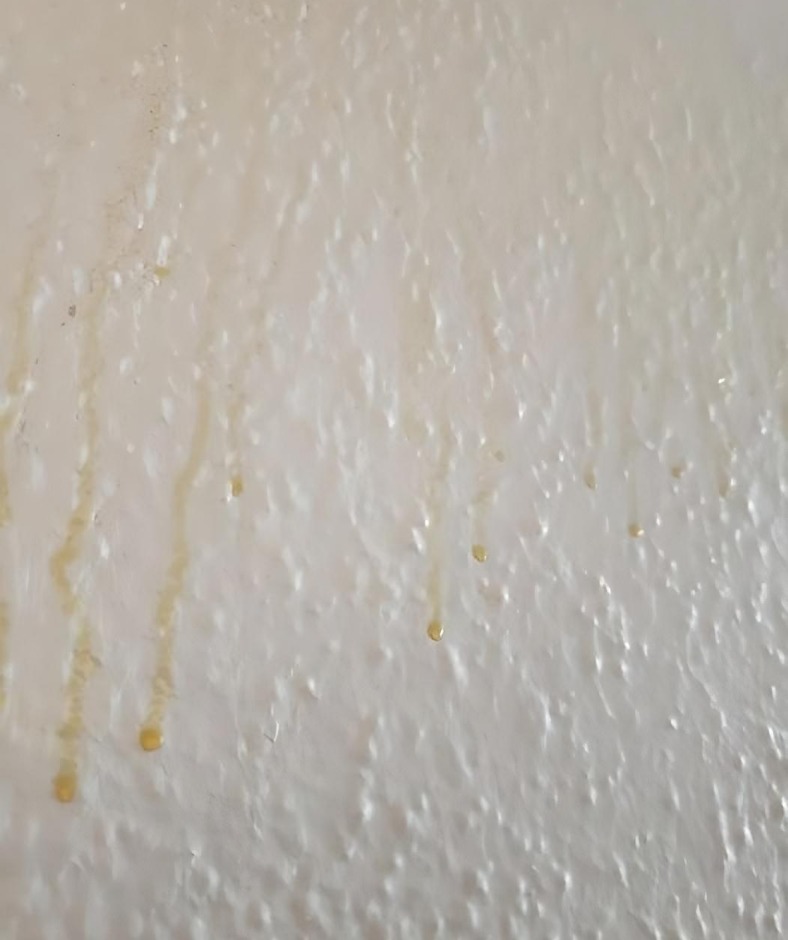Noticing yellow streaks running down your bathroom walls can be both puzzling and concerning. Bathrooms are supposed to be pristine and relaxing, but such unsightly stains can easily disrupt that sense of tranquility. If you’re dealing with this issue, you’ve probably asked yourself, “What’s causing this?” The good news is that you’re not alone, and there are explanations for these mysterious drips. Let’s explore the potential causes and solutions for keeping your bathroom clean and free of yellow stains.

Is Mold Behind Those Yellow Streaks?
Mold is one of the most common culprits behind strange stains in bathrooms. Mold thrives in damp, humid environments, and bathrooms offer the perfect conditions for its growth. Mold spores spread quickly when they land on wet surfaces, and while some molds are harmless, others can cause significant health problems. From triggering allergies and respiratory issues to potentially causing chronic conditions, mold is more than just an eyesore—it’s a health hazard.
If those yellow drips on your walls are paired with a musty smell or worsen your allergy symptoms, mold could be the cause. Bathrooms often maintain the ideal temperature and humidity for mold to grow, especially if ventilation is inadequate.
Why Does Mold Grow in Bathrooms?
Mold in bathrooms is a matter of “when,” not “if.” After a hot shower, steam condenses on walls, ceilings, and tiles. Without proper ventilation, this moisture lingers, creating a breeding ground for mold. Mold often appears in hard-to-reach areas like behind toilets, under sinks, or on ceilings.
Yellow streaks could indicate the early stages of mold growth. While mold is typically associated with black or green colors, certain types appear yellow, especially when combined with soap scum or hard water residue.
Could It Be Something Else?
While mold is a common explanation, it’s not the only reason yellow stains might appear in your bathroom. Here are some other potential causes:
- Nicotine Residue
If previous homeowners or tenants smoked indoors, nicotine stains might be to blame. Over time, nicotine residue seeps through paint, especially in humid areas like bathrooms. Even if the walls have been repainted, this residue can resurface as yellow streaks, particularly in damp conditions. - Soap Scum and Hard Water Deposits
A mixture of soap scum and hard water deposits can also lead to yellowish discoloration. Hard water contains minerals that build up over time, and when combined with soap residue, they can form streaks on walls and other bathroom surfaces. - Yellow Mold or Mildew
Not all molds are black—some appear yellow. Yellow mold can grow on bathroom walls, particularly in areas with poor ventilation. This type of mold can be as harmful as its darker counterparts, so addressing it quickly is essential.
How to Prevent Yellow Drips and Mold Growth in Your Bathroom
The best defense against yellow drips is prevention. With a few simple changes, you can reduce moisture buildup and keep your bathroom clean and mold-free. Here are some practical tips:
- Improve Ventilation
Proper airflow is essential. Use an exhaust fan during and after showers, open windows when possible, and leave the bathroom door slightly open to let moisture escape. - Wipe Down Surfaces
After each shower, take a moment to dry walls, tiles, and other surfaces where moisture collects. This small habit can significantly reduce the chance of mold forming. - Use Mold-Resistant Paint
If you’re planning to repaint your bathroom, consider using mold-resistant paint. These paints are specially formulated to prevent mold growth on walls and ceilings. - Clean Regularly
Regular cleaning helps prevent mold and other stains. Use bathroom-specific cleaning solutions to remove soap scum, hard water deposits, and potential mold spores.
How to Remove Mold If It’s Already Present
If mold has already appeared on your walls, don’t panic. Here are some effective ways to tackle it:
- Bleach Solution
For non-porous surfaces like tiles and sinks, mix one cup of bleach with a gallon of water. Scrub the affected areas thoroughly, ensuring the bathroom is well-ventilated while cleaning. - Natural Alternatives
Prefer a gentler option? Vinegar or hydrogen peroxide can effectively remove mold. Spray your chosen solution on the moldy areas, let it sit for a while, then scrub clean. - Wear Protective Gear
Always wear gloves and a mask when cleaning mold to avoid exposure to spores and harsh chemicals. - Call in Professionals if Necessary
If the mold problem is extensive or deeply embedded in walls, it’s best to hire a professional. Experts have the tools and expertise to safely and effectively remove mold.
Conclusion: Act Quickly to Keep Your Bathroom Safe
Yellow streaks on bathroom walls are a sign that something isn’t right. Whether it’s mold, nicotine residue, soap scum, or hard water deposits, identifying and addressing the root cause is crucial. With proper ventilation, regular cleaning, and prompt action, you can keep your bathroom free of unsightly stains and potential health risks.
If the problem feels overwhelming or persists despite your efforts, don’t hesitate to reach out to professionals for assistance. Staying proactive ensures your bathroom remains a clean, safe, and healthy space for you and your family.